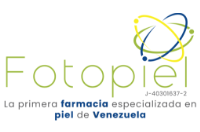Tratamiento de Tinea Unguis con terbinafina oral interdiaria, en la Sección de Micología Médica del Instituto de Medicina Tropical, Universidad Central de Venezuela
Palabras clave:
tinea unguis, Trichophyton rubrum, Trichophyton mentagrophytes, tratamiento, terbinafina, treatment, terbinafineResumen
Las dermatofitosis, entre ellas las tiñas de los pies y de las uñas, son las micosis superficiales más frecuentes en el mundo y en Venezuela. Son uno de los principales motivos de consulta dermatológica, constituyendo un verdadero problema de salud pública por su elevada morbilidad. El tratamiento se realiza fundamentalmente por vía oral. El objetivo de esta investigación fue evaluar la respuesta al tratamiento con terbinafina oral, utilizando el esquema diario convencional y comparándolo con el uso de este medicamento los días lunes, miércoles y viernes, en pacientes con tinea unguis que acudieron a la consulta externa en la Sección de Micología Médica del Instituto de Medicina Tropical de la UCV desde 2002 hasta 2010. Se estudiaron las historias médicas de personas con diagnóstico de tinea unguis. Los datos obtenidos fueron organizados en una hoja de cálculo en Microsoft Excel y se les realizó un análisis porcentual. Se comprobó el diagnóstico de dermatofitosis, en 240 casos evaluados integralmente. De estos, 231 fueron tinea unguis. Los resultados de los cultivos fueron: 184 (79.65%) T. rubrum y 47 (20.35%) T. mentagrophytes. 102 (44.15%) recibieron terbinafina diaria por un periodo de 6 a 10 meses con buena evolución. A 72 (30%) pacientes del otro grupo, la terbinafina se les administró de manera interdiaria, es decir 250 mg lunes, miércoles y viernes por igual período de tiempo. La evolución fue satisfactoria en todos los casos. La modalidad de administrar terbinafina interdiaria, fue exitoso, en el mismo lapso de tiempo que con la dosis original y hasta los momentos no hemos detectado recaídas en este grupo, por lo cual recomendamos este esquema terapéutico.Abstract:
Dermatophytoses, among them those of feet and hand nails, are the most frequent superficial mycoses in the world and in Venezuela. They are one of the main reasons for dermatological consultations, constituting a real public health problem due to their high morbility. Treatment is basically done by the oral route. The objective of this investigation was to evaluate response to treatment with oral terbinafine using the conventional daily dose scheme, and comparing it with the use of this drug on Monday, Wednesday and Friday, applied to patients with tinea unguis who attended the outpatient clinic of the Medical Mycology Section of the Institute of Tropical Medicine of Central University of Venezuela between 2002 and 2010. The medical case histories of persons with a tinea unguis diagnosis were studied. The data obtained were organized in a Microsoft Excel spreadsheet and a percentage analysis was carried out. The dermatophytosis diagnosis was confirmed in 240 of the cases evaluated integrally. Of these, 231 were tinea ungis. The culture results were: 184 (79.65%) T. rubrum and 47 (20.35%) T. mentagrophytes. In one group, 102 (44.15%) patients received daily terbinafine during a 6 to 10 months period with good evolution. In the other group, 72 (30%) patients received terbinafine every other day, i.e, 250 mg Mondays, Wednesdays and Fridays during the same time period. Evolution was satisfactory in all cases. The modality of administering terbinafine every other day was successful in the same period of time than with the original dose, and up to now we have not detected relapses in this group, due to which we recommend this treatment scheme.
Descargas
Número
Sección
Artículos
Licencia
Publicado por la Sociedad Venezolana de Dermatología Médica, Quirúrgica y Estética







